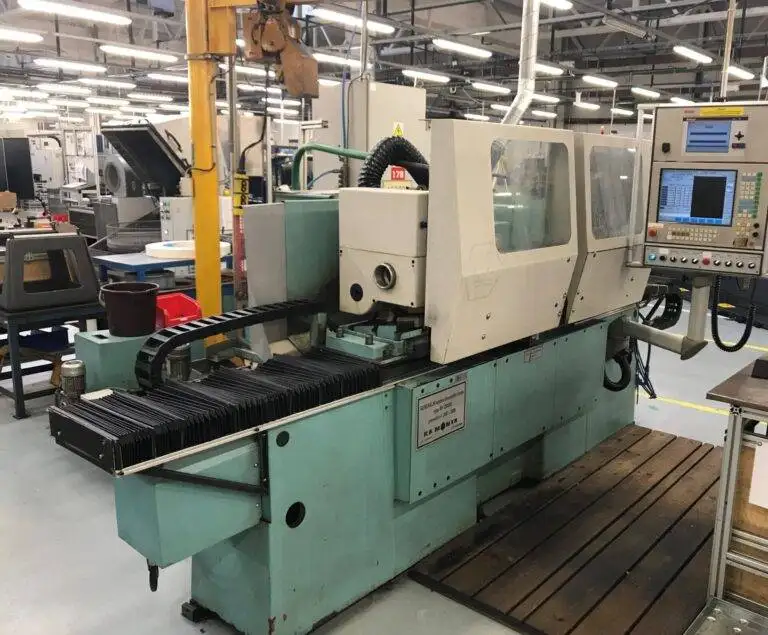High-speed Five Axis Machining Questions
Five-axis machining is an essential manufacturing process in modern industries to achieve high tolerance, complex geometries, and superb surface finish. However, many questions arise when it comes to high-speed five-axis machining, which demands precision, expertise, and attention to details. In this article, we will provide answers to some of the commonly asked questions about high-speed five-axis machining.
What is High-speed Five Axis Machining?
High-speed Five-axis machining is a manufacturing process that employs five axes or more to create complex geometries on a workpiece. This machining technique is used to produce precise parts with high surface finish requirements. The primary advantage of high-speed five-axis machining is the ability to machine a wide range of angles and contours, producing complex shapes in a single setup, which reduces manufacturing time and cost.
What are the Benefits of High-speed Five Axis Machining?
High-speed five-axis machining offers several benefits, including:
Improved Accuracy and Precision
Five-axis machining provides the ability to machine complex geometries with greater accuracy and precision than conventional machining techniques. This machining technique allows you to achieve tight tolerances and excellent surface finishes, which makes it ideal for producing parts with critical dimensions.
Increased Productivity
High-speed five-axis machining improves productivity by reducing setup time, reducing the number of machining operations, and producing parts with fewer errors. This machining technique reduces the need for multiple setups and fixtures, which saves time and increases efficiency.
Enhanced Design Flexibility
Five-axis machining allows you to produce complex geometries that are difficult or impossible to machine with conventional techniques. This machining technique allows you to machine at different angles and orientations, which results in parts with complex geometries and shapes.
What are the Tools Used in High-speed Five Axis Machining?
High-speed five-axis machining uses several tools to machine complex geometries and shapes. Some of the commonly used tools in high-speed five-axis machining include:
Ball End Mills
Ball end mills are used to machine complex curves and contours on the surface of the workpiece. These tools are ideal for machining free-form surfaces, such as those found in aerospace and automotive applications.
Drills
Drills are used to create holes in the workpiece. High-speed drilling is achieved by using specialized drills that can handle the high speeds and feed rates required for high-speed five-axis machining.
End Mills
End mills are used to machine flat surfaces, pockets, and slots in the workpiece. These tools come in different shapes and sizes, depending on the application.
Reamers
Reamers are used to refine the size and surface of pre-drilled holes. These tools are used to produce high-precision holes with tight tolerances.
What are the Advantages of High-speed Five Axis Machining Over Traditional Machining Techniques?
High-speed five-axis machining offers several advantages over traditional machining techniques, including:
Reduced Production Time
High-speed five-axis machining reduces production time by performing multiple machining operations in a single setup. This machining technique reduces the need for multiple setups and fixtures, which saves time and increases efficiency.
Improved Surface Finish
Five-axis machining produces excellent surface finishes due to the ability to machine at different angles and orientations. This machining technique allows you to achieve tight tolerances and superb surface finishes, which makes it ideal for producing parts with critical dimensions.
Increased Design Flexibility
Five-axis machining allows you to produce complex geometries that are difficult or impossible to machine with conventional techniques. This machining technique allows you to machine at different angles and orientations, which results in parts with complex geometries and shapes.
Enhanced Accuracy and Precision
Five-axis machining provides the ability to machine complex geometries with greater accuracy and precision than conventional machining techniques. This machining technique allows you to achieve tight tolerances and excellent surface finishes, which makes it ideal for producing parts with critical dimensions.
Conclusion
High-speed five-axis machining is an essential manufacturing process that provides several advantages over traditional machining techniques. This machining technique offers improved accuracy, increased productivity, and enhanced design flexibility. By using specialized tools such as ball end mills, drills, end mills, and reamers, high-speed five-axis machining can produce complex geometries with high surface finish requirements. It’s important to understand the benefits of high-speed five-axis machining, as it can reduce production time, improve surface finish, and increase design flexibility, ultimately leading to a better end product.





